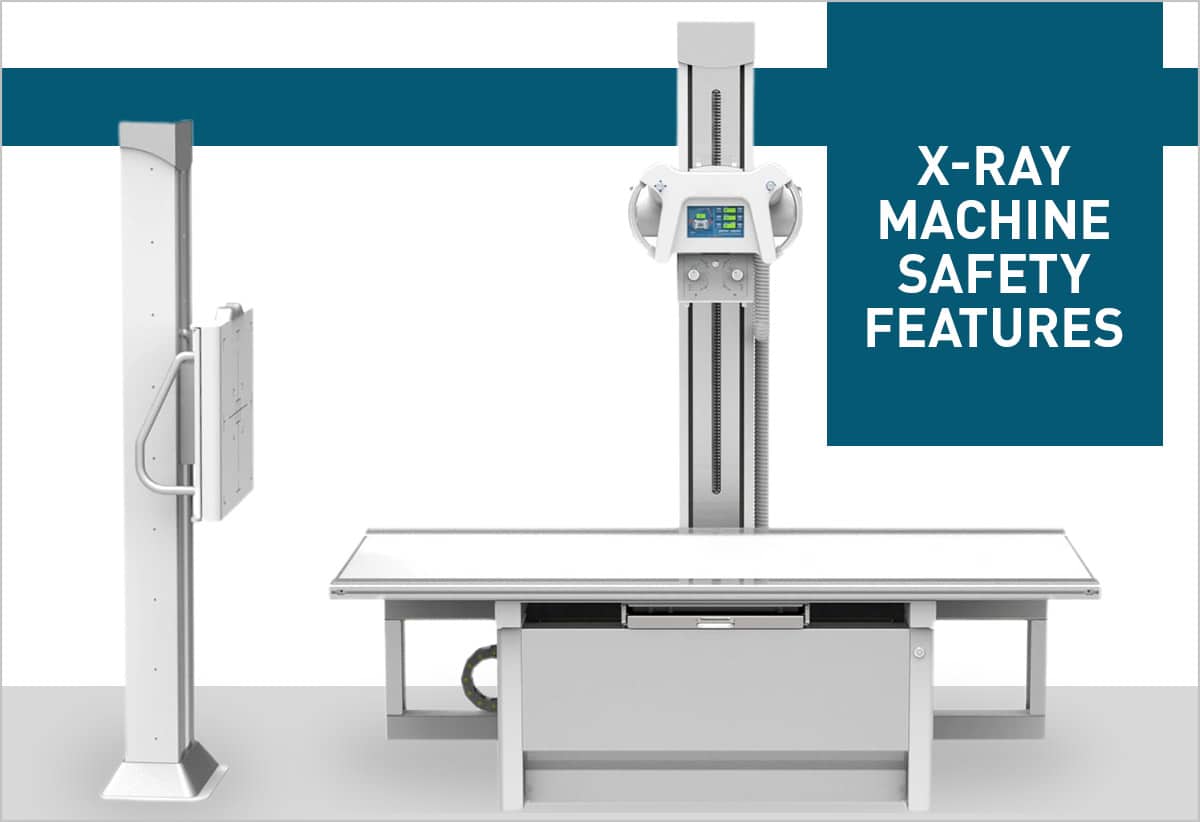Essential information about x-ray machine safety features!

X-ray machines are commonly used in medical facilities, dental offices, and other industries to produce images of the body’s internal structures. While these machines are essential for diagnosis and treatment, they pose potential risks to patients and operators. As such, it’s essential to understand the safety features of X-ray machines to ensure that they are being used safely and responsibly.
This article explains some essential safety features of X-ray machines that will help you operate them safely.
Safety features of X-ray machines
Collimators
Collimators are devices that help control the X-ray beam’s size and shape. They are typically made up of lead plates or shutters that can be adjusted to limit the amount of radiation exposure to a specific body area.
When using an X-ray machine, it’s essential to ensure that the collimator is aligned correctly and adjusted to minimize the radiation dose to the patient.
Things to remember:
- Always ensure the collimator is aligned and adjusted before using the X-ray machine.
- Regularly check the collimator for damage or wear and tear that may affect its effectiveness.
- Use additional shielding, such as lead aprons, to further reduce radiation exposure to the patient.
Automatic Exposure Control (AEC)
Automatic Exposure Control (AEC) is a safety feature that helps to ensure that the X-ray machine produces the correct amount of radiation for the patient’s size and body type.
AEC devices are typically located within the X-ray tube housing and measure the amount of radiation that passes through the patient’s body. They then automatically adjust the X-ray machine’s settings to produce the correct amount of radiation for optimal image quality while minimizing the radiation dose to the patient.
Things to remember:
- AEC devices are not a substitute for proper positioning and collimation techniques.
- Always check that the AEC device is calibrated correctly before using the X-ray machine.
- Regularly monitor radiation dose levels and adjust the X-ray machine’s settings to ensure optimal image quality and patient safety.
Beam Limiting Devices (BLDs)
They are similar to collimators in that they help control the X-ray beam’s size and shape. However, unlike collimators, BLDs are fixed devices permanently attached to the X-ray equipment. They typically consist of lead sheets with small apertures that limit the X-ray beam’s size to a specific body area.
Things to remember:
- BLDs are fixed devices that cannot be adjusted like collimators, so choosing the correct size and shape for the intended use is essential.
- Always ensure the BLD is appropriately positioned and secured to prevent movement during use.
- Check the BLD regularly for damage or wear and tear that may affect its effectiveness.
Radiation Monitors
These devices measure the radiation exposure to the operator and patient during X-ray procedures. They can be handheld or mounted on the X-ray machine, providing real-time radiation dose levels feedback. This information can be used to adjust the X-ray machine’s settings to ensure optimal image quality while minimizing radiation exposure to the operator and patient.
Things to remember:
- Always use a radiation monitor to ensure optimal safety when operating an X-ray machine.
- Regularly calibrate the monitor to ensure accurate readings.
- Keep the monitor within the X-ray machine’s operating range for accurate measurements.
Patient Positioning and Immobilization Devices
Patient positioning and immobilization devices help ensure the patient is correctly positioned during X-ray procedures. They can include foam pads, straps, and other devices that help to immobilize the patient and prevent movement during the procedure. Proper patient positioning and immobilization can ensure optimal image quality while minimizing radiation exposure to the patient.
Always use the appropriate patient positioning and immobilization devices for the intended procedure.
Things to remember:
- Ensure the devices are correctly positioned and secured to prevent movement during the procedure.
- Regularly check the devices for wear and tear that may affect their effectiveness.
Radiation Shielding
Radiation Shielding is an essential safety feature that helps to protect both the patient and operator from radiation exposure during X-ray procedures. Shielding can include lead aprons, thyroid shields, and leaded glass windows or curtains that help to absorb and scatter radiation.
Shielding should be further used with other safety features, such as collimators and BLDs, to reduce radiation exposure to the patient and operator.
Things to remember:
- Always use appropriate radiation shielding for the intended procedure.
- Check the shielding regularly for damage or wear and tear that may affect its effectiveness.
- Ensure that the shielding is appropriately positioned and secured to provide optimal protection.
Conclusion
In conclusion, X-ray machines are essential in healthcare and other industries, but they pose potential risks to patients and operators. Understanding the safety features of X-ray system is critical to ensure that they are used safely and responsibly.
Collimators, AEC devices, BLDs, radiation monitors, patient positioning and immobilization devices, and radiation shielding are some essential safety features that can help minimize radiation exposure and optimize image quality. By following these safety guidelines, X-ray machines can be used safely and effectively to diagnose and treat various medical conditions.
We provide full line Pre-Owned and Refurbished of X-ray Systems for sale. To get further information on availability, price, specification, and condition, please feel free to contact us via email at sales@kbdentalconsulting.com

 SUBSCRIBE TO OUR BLOG
SUBSCRIBE TO OUR BLOG
